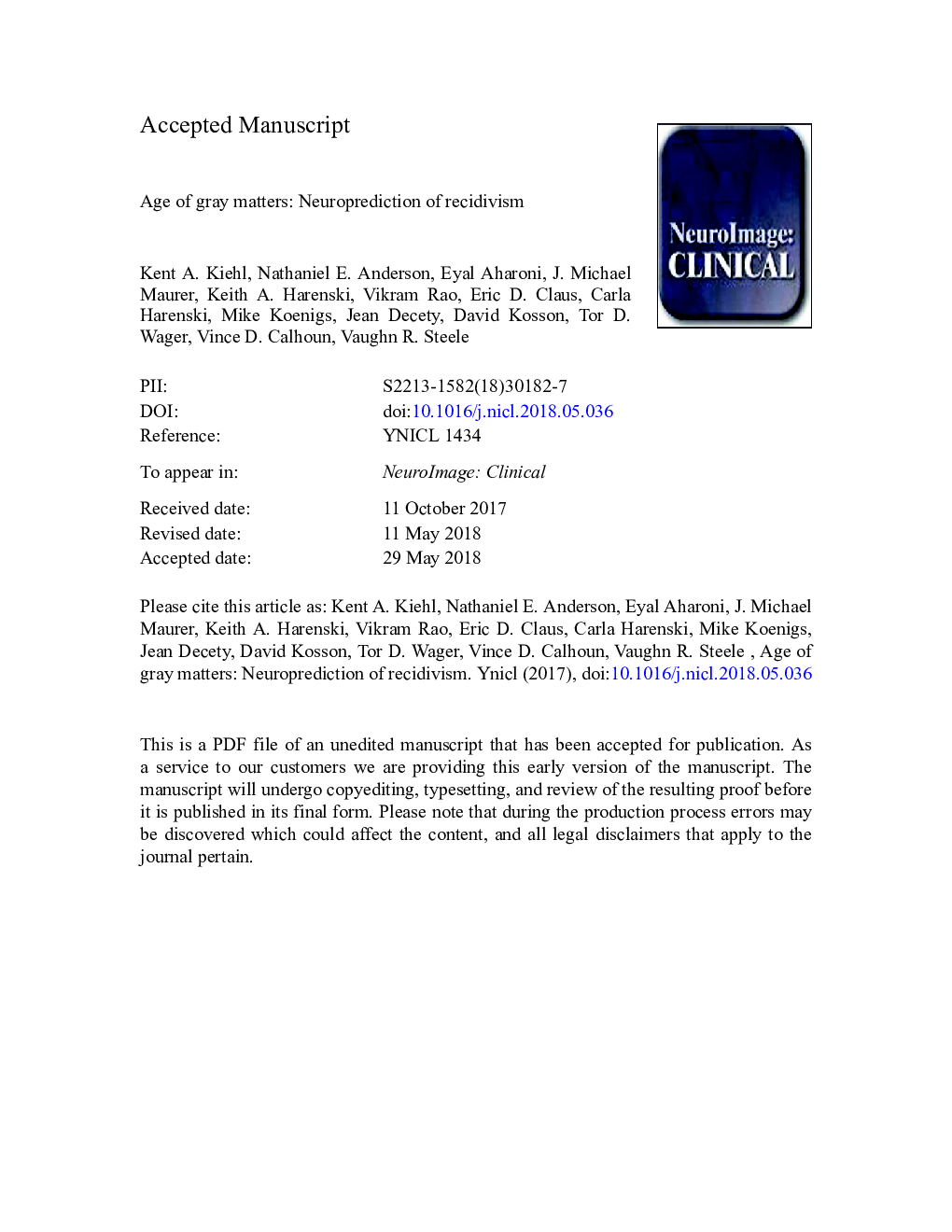| کد مقاله | کد نشریه | سال انتشار | مقاله انگلیسی | نسخه تمام متن |
|---|---|---|---|---|
| 8687781 | 1580948 | 2018 | 32 صفحه PDF | دانلود رایگان |
عنوان انگلیسی مقاله ISI
Age of gray matters: Neuroprediction of recidivism
ترجمه فارسی عنوان
سن مسائل خاکستری: پیش بینی عصبی از تجدید حیات
دانلود مقاله + سفارش ترجمه
دانلود مقاله ISI انگلیسی
رایگان برای ایرانیان
کلمات کلیدی
موضوعات مرتبط
علوم زیستی و بیوفناوری
علم عصب شناسی
روانپزشکی بیولوژیکی
چکیده انگلیسی
Age is one of the best predictors of antisocial behavior. Risk models of recidivism often combine chronological age with demographic, social and psychological features to aid in judicial decision-making. Here we use independent component analyses (ICA) and machine learning techniques to demonstrate the utility of using brain-based measures of cerebral aging to predict recidivism. First, we developed a brain-age model that predicts chronological age based on structural MRI data from incarcerated males (nâ¯=â¯1332). We then test the model's ability to predict recidivism in a new sample of offenders with longitudinal outcome data (nâ¯=â¯93). Consistent with hypotheses, inclusion of brain-age measures of the inferior frontal cortex and anterior-medial temporal lobes (i.e., amygdala) improved prediction models when compared with models using chronological age; and models that combined psychological, behavioral, and neuroimaging measures provided the most robust prediction of recidivism. These results verify the utility of brain measures in predicting future behavior, and suggest that brain-based data may more precisely account for important variation when compared with traditional proxy measures such as chronological age. This work also identifies new brain systems that contribute to recidivism which has clinical implications for treatment development.
ناشر
Database: Elsevier - ScienceDirect (ساینس دایرکت)
Journal: NeuroImage: Clinical - Volume 19, 2018, Pages 813-823
Journal: NeuroImage: Clinical - Volume 19, 2018, Pages 813-823
نویسندگان
Kent A. Kiehl, Nathaniel E. Anderson, Eyal Aharoni, J.Michael Maurer, Keith A. Harenski, Vikram Rao, Eric D. Claus, Carla Harenski, Mike Koenigs, Jean Decety, David Kosson, Tor D. Wager, Vince D. Calhoun, Vaughn R. Steele,
